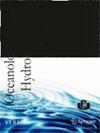Antifouling activity of bacterial extracts associated with soft coral and macroalgae from the Red Sea
IF 1
4区 环境科学与生态学
Q4 OCEANOGRAPHY
引用次数: 1
Abstract
Abstract In marine environments where biofouling occurs and has an impact on the maritime economy and environment, compounds that inhibit the attachment, growth and survival of microorganisms in a biofilm complex as well as settlement of larvae are considered potential antifouling compounds. In this study, the extracellular metabolites from two surface-associated bacteria isolated from soft coral and macroalga were evaluated for antibiofilm and antisettlement activity. The bacteria were identified using 16S rRNA gene sequencing, and the culture supernatant extract of each strain was evaluated for antibiofilm activity. The compounds present in the extracts were analysed using GC-MS. The two bacterial strains were identified as Bacillus licheniformis MBR1 and Vibrio alginolyticus MBR4 for the isolates from soft coral and macroalgae, respectively. The extracts inhibited the growth of biofilm-forming bacteria, biofilm formation and barnacle larval settlement. The GC-MS analysis of the extract detected the presence of compounds such as tetrapentacontane, octadecanoic acid, 2,3-dihydroxypropyl ester, hexadecanoic acid, 2-hydroxy-1-(hydroxymethyl) ethyl ester and 17-pentatriacontene. The results of the study show that extracellular metabolites of the bacteria associated with marine organisms could be used as natural antifouling compounds to control biofouling.红海软珊瑚和大型藻类细菌提取物的防污活性
摘要在发生生物淤积并对海洋经济和环境产生影响的海洋环境中,抑制微生物在生物膜复合体中附着、生长和存活以及幼虫定居的化合物被认为是潜在的防污化合物。在本研究中,对从软珊瑚和大型藻类中分离的两种表面相关细菌的细胞外代谢产物的抗生物膜和抗沉降活性进行了评估。使用16S rRNA基因测序鉴定细菌,并评估每个菌株的培养上清液提取物的抗生物膜活性。使用GC-MS分析提取物中存在的化合物。从软珊瑚和大型藻类中分离出的两个菌株分别鉴定为地衣芽孢杆菌MBR1和溶藻弧菌MBR4。提取物抑制了生物膜形成菌的生长、生物膜的形成和藤壶幼虫的定居。提取物的GC-MS分析检测到化合物的存在,如四五碳烷、十八烷酸、2,3-二羟丙基酯、十六烷酸、2-羟基-1-(羟甲基)乙酯和17-五碳三烯酸。研究结果表明,与海洋生物相关的细菌的细胞外代谢产物可以用作天然防污化合物来控制生物污垢。
本文章由计算机程序翻译,如有差异,请以英文原文为准。
求助全文
约1分钟内获得全文
求助全文
来源期刊
CiteScore
1.70
自引率
11.10%
发文量
8
审稿时长
>12 weeks
期刊介绍:
Oceanological and Hydrobiological Studies is an international journal published by the Institute of Oceanography, University of Gdańsk in Poland. The journal has 4 issues per year and contains papers on all aspects of the marine environment and hydrobiology. All manuscripts are reviewed by editors and independent experts. Based on the referees'' recommendations, the Editor will make a decision on whether to accept a contribution. All articles are published in English. The journal is open to all matters concerning the water environment, thus providing the readers with a wide spectrum of topics in every issue.

 求助内容:
求助内容: 应助结果提醒方式:
应助结果提醒方式:


